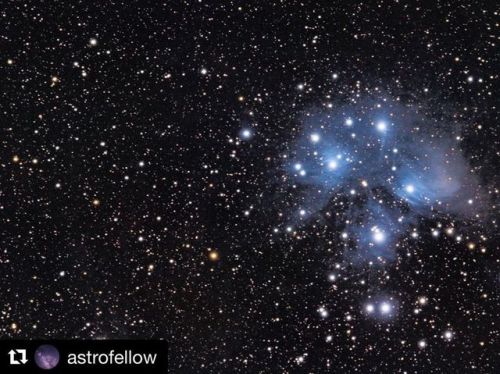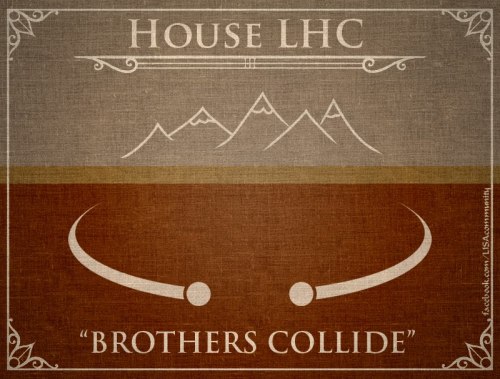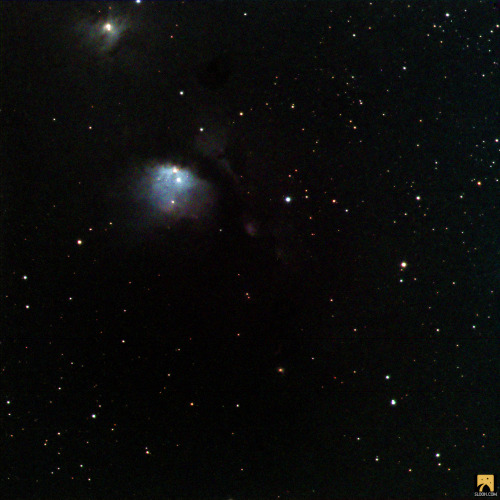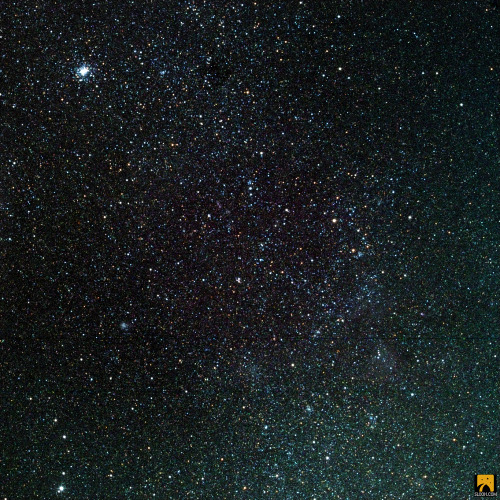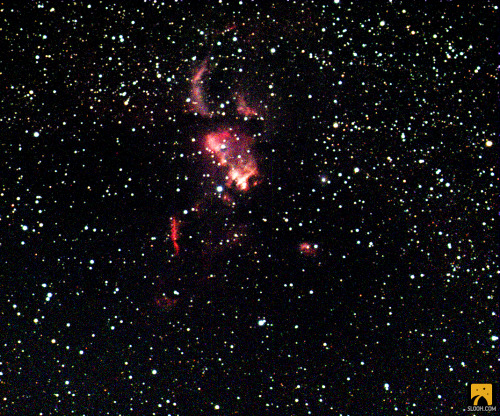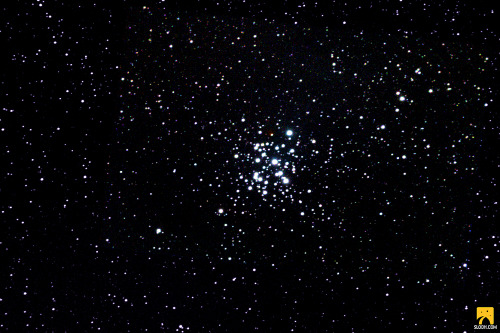#telescopes
..if you wish to see the planets with detail! They may help you by preventing you from being wiped off of the face of the Earth by a bus, but when it comes to inspecting the Moon and making conspiracy theories to as why there appears to be a face on the Moon.. You’ll need a telescope!

In the picture above we see the great Sir Patrick Moore with his 15ins telescope at his house in Farthings, Selsey, 30 years ago. I’m going to assume that most of you have heard of Patrick Moore, especially after the unfortunate, yet inevitable, death. You may also know that he was an English amateur astronomer that was indeed quite fond of telescopes.
Here’s a video on the many Telescopes of Sir Patrick Moore
However, this article isn’t focusing on Patrick Moore, but more on how telescopes work and the different types of telescopes. If you wish to read up on him, then this is quite a good article.
Different types of Telescopes? Surely you’re not telling me that there’s MORE than one type of Telescope?!
You have much to learn, young Padawan. There are many different types of telescopes: Optical telescopes, Radio telescopes, X-ray telescopes, Gamma-ray telescopes, High-energy particle telescopes, etc. I’m going to focus on Optical telescopes and there are three main types of these: Refractors, reflectors and the compound/catadioptric telescope.

The type of telescope is determined by the part of the telescope that gathers light. This part is called the objective. Refractors use a glass lens as its objective, so that the glass lens is at the front of telescope and light is bent/refracted as it passes through this lens. A reflector uses a mirror instead as its objective. The mirror is close to the rear of the telescope and light is bounced off/reflected off as it strikes the mirror. Compound telescopes use both mirrors and lenses to collect and focus the incoming light.
Which one is the best telescope for me?
Well, it depends on what you’d like to see. Refractors are known for sharp, detailed and well-contrasted images. They are said to be best for viewing the moon and planets. A small refractor of 60 mm to 80 mm aperture will make a good starting scope to observe the Moon and planets. They’re portable and inexpensive and a refractor is possibly the best choice if you will be doing most of your observing from the city or suburbs, where there is light pollution.
Newtonian reflectors are great-all around scopes that aren't too expensive either. You can view both planetary and deep-sky viewing; however, these scopes are more fragile and require more maintenance than the others.
Compound telescopes/catadioptrics are said to be the most versatile telescopes and have the best all around, all-purpose design. They tend to be very portable and compact, and if you use them in the right situations (away from light pollution with a clear night sky), then you should be able to see excellent views of the Moon, planets and faint deep sky objects such as clusters, galaxies, nebulae comets, etc. This is probably the most suited telescope for astrophotography, yet you've got to pay the slightly expensive price for one of these.. However, to quote spacephilosopher “You lose your house, but you get the Universe”.
 Unfortunately, telescopes don’t float around in the air and position themselves perfectly for us… yet. They need to be supported by some type of stand, or mount, unless you feel like doing a bit of weight-lifting. There are two basic types of telescope mounts: Alt-azimuth and Equatorial.
Unfortunately, telescopes don’t float around in the air and position themselves perfectly for us… yet. They need to be supported by some type of stand, or mount, unless you feel like doing a bit of weight-lifting. There are two basic types of telescope mounts: Alt-azimuth and Equatorial.
The alt-azimuth mount is similar to a camera tripod, it uses a vertical (altitude) and a horizontal (azimuth) axis to locate an object. This type of mount is simple to use, but it doesn’t track the motion of stars properly. When it tries to, it produces a “zig-zag” motion instead of a smooth arc across the sky. This makes this type of useless for taking photographs of the stars.
The equatorial mount uses two axes (right ascension, or polar, and declination) aligned with the poles to track the motion of an object across the sky. Instead of being orientated up and down, it’s tilted at the same angle as the Earth’s axis of rotation.
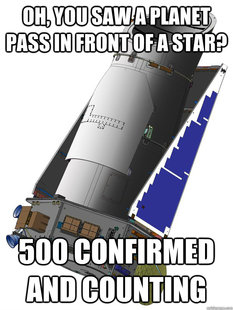
Sources:
http://www.souledout.org/rsl/telescope/choosingtelescope.html
http://science.howstuffworks.com/telescope5.htm
http://en.wikipedia.org/wiki/Telescope
The Sky at Night book - Sir Patrick Moore & Chris North (Worth buying)

The Ring Nebula (M57), is more complicated than it appears through a small telescope. The easily visible central ring is about one light-year across, but this remarkably deep exposure shows in detail the looping filaments of glowing gas extending much farther from the nebula’s central star. This image, taken by combining data from three different large telescopes, includes red light emitted by hydrogen as well as visible and infrared light. The Ring Nebula is an elongated planetary nebula, a type of nebula created when a Sun-like star evolves to throw off its outer atmosphere to become a white dwarf star. The Ring Nebula is about 2,500 light-years away from us here on Earth.
Image Credit: Hubble, Large Binocular Telescope, Subaru Telescope; Composition & Copyright: Robert Gendler
Shaun putting on a show for the peanut gallery at telescopes. #telescopes #barrel #mentawai @aquapix2 @shauneden #togatnusaretreat
Post link
#Repost @astrofellow
・・・
2019-10-04 Pleiades (M45)
— Equipment I used:
Nikon D7100
WO Z61
iO SkyGuider Pro
—
Blue & Gold!
I’d like you all to meet The Seven Sisters, an open star cluster containing B-type stars located in the constellation of Taurus. My personal favorite open cluster. I really wanted to shoot the Pleiades and couldn’t wait until they were in the sky earlier in the night, so I shot this on a night where they would be high enough starting at 22:30; it turned out to be a pretty late night. It was also the night before my birthday, so I spent the early morning of my birthday accompanied by The Seven Sisters; Sterope, Merope, Electra, Maia, Taygeta, Celaeno, and Alcyone. Along with their parents, Atlas and Pleione.
Enjoy!
—
A little about this object:
The Pleiades were formed within the last 100 million years. They’re about 444 light-years away from us. Around the brightest of the stars, you see the reflection nebulae; clouds of interstellar dust which reflect the light of nearby stars. There are two theories about the nebulae; that it could be leftover material from the formation of the cluster, or that it could be an unrelated dust cloud in the interstellar medium through which the stars are currently passing. There is an origin of the name Pleiades, as well as some very interesting folklore and mythology. Look into it!
Also, astronomers estimate that the cluster will survive for about another 250 million years, after which it will disperse due to gravitational interactions with its galactic neighborhood.
—
Clear skies,
— M. Norcia
103 light frames x 60-seconds @ ISO 800
20 dark frames
20 flat frames
— @williamoptics @highpointscientific @astrobackyard @ioptron_telescopes
#pleiades #stars #astrophotography #space #astronomy #nightskyphotography #telescopes #nightsky #starrynight #universetoday #explore #naturephotography #nikon #stargazing #starrysky #nightphotography #taurus #universe #telescope #nebula #m45 #nature
https://www.instagram.com/p/B3dbq6Ph3Yb/?igshid=1h9f3ylzceafj
Post link
SCIENCE IS COMING.
In honor of the release of Game of Thrones Season 6 today, check out these amazing House designs made by students from the Albert Einstein Institute. Each Game of Thrones inspired sigil celebrates a different changing project in physics and space exploration.
House Hubble - Hubble Space Telescope
House ISS - International Space Station
House ITER - Nuclear Fusion Project
House LHC - Large Hadron Collider
House Curiosity - Mars Science Laboratory
House LISA - Laser Interferometer Space Antenna
House JWST - James Webb Space Telescope
House VLA - Very Large Array
I’m super torn because while I’m #teamradioforever, I’m also a lifelong #hubblehugger. I guess if I’m forced to chose, it might have to be House VLA.
-Summer
[HTCharee Peters]
Given last night’s Game of Thrones Season 8 premiere, it’s clearly time for this to make the rounds again! What I forgot to add the first time around was that the students who made this were working on the Laser Interferometer Space Antenna (LISA) Mission (a space-based version of LIGO). The original post sharing these designs is on LISA’s Facebook Page.
Also, I guess I put something out into the universe by saying I’m House VLA because that will officially be the case as of July 1st. ;)
-Summer
Post link
Viewing the Big Bang.
A sensitive microwave telescope at the South Pole announced the discovery of polarization distortions in the Cosmic Microwave Background Radiation recently, which is the observable afterglow of the Big Bang.
Post link
Object of the Week: Five-Draw Telescope, unknown maker, Italy, 1700-1750. 2018.8.5.
The introduction of the telescope in 1608 led to the production of many Galilean telescopes with a single-lens eyepiece, low magnification, and a narrow field of view. The development of the compound eyepiece in 1645 made it possible to use the telescope as a more effective device for astronomical and terrestrial observation. This example could be used for both types of observation: at 44 cm in length, it’s portable, and it provides magnification and a field of view convenient for observing both realms.
Post link
11/26/2021
God will give us the super-vision we need.
JOKE-OGRAPHY:
Jesus explains that the end of days will be pretty obvious to those on the lookout, saying there will even be “signs in the sun, the moon, and the stars.” In this cartoon, Matthew astutely notices that those celestial bodies are a fair distance from Earth and, thinking that Jesus is saying to literally look for sign posts mounted on them, asks how they’d be possible to see. Naturally, Peter answers with the most logical, philosophically-blind answer he can.
Post link
This is some telescope astroart!
I took this picture of the Helix Nebula, but the telescope probably had some glitch or error, resulting in this strangely ominous circle. This occurs from time to time and it’s some cool art!
Taken by me (Michelle Park) using the Slooh Canary Two telescope on January 5th, 2022 at 1:05 UTC.
Post link
This is the Crab Nebula!
This seemingly inert supernova remnant emits 75,000 times more energy than the Sun. Despite the neutron star in its center having a small diameter of 18 miles, it has a mass of 1.5 times the Sun!
Taken by me (Michelle Park) using the Slooh Canary One telescope on January 5th, 2022 at 21:12 UTC.
Post link
This is McNeil’s Nebula!
This beautiful nebula was discovered recently in 2004 and was found to be a variable nebula, likely because it is lit up by a variable star inside. However, mysteries still remain: in 2018, amateur astronomers thought that the nebula had disappeared! ✨✨✨
Taken by me (Michelle Park) using the Slooh Chile Two telescope on January 3rd, 2022 at 6:27 UTC.
Post link
This is Comet Leonard!
This beautiful comet is making its closest approach to Earth today, almost a year after it was first discovered by astronomer Greg Leonard. After this approach, the comet will be ejected out of the Solar System forever! ✨✨✨
Taken by me (Michelle Park) using the Slooh Chile Two telescope on January 3rd, 2022 at 1:07 UTC.
Post link

MyTop Posts in 2021
#5

This is the Skull Nebula!
The glow of this eerie nebula is perfect for Halloween! This planetary nebula has a binary star system with a third star orbiting it. The beautiful colors of this nebula come from the outer layers of a Sun-like star that died in an explosion!
Taken by me (Michelle Park) using the Slooh Canary Three telescope on October 28th, 2021 at 1:57 UTC.
423 notes • Posted 2021-10-28 17:26:10 GMT
#4

This is the Crescent Nebula!
Happy Valentine’s Day! To celebrate, here is a ❤red❤ emission nebula: its color is created by energized hydrogen. This nebula was formed by a young Wolf-Rayet star blowing stellar wind and when the star became a red giant, it energized the wind!
Taken by me (Michelle Park) on February 14th, 2021 at 6:51 UTC using the Slooh Canary Two telescope.
438 notes • Posted 2021-02-14 15:04:10 GMT
#3

This is Haley’s Coronet!
The interaction between the larger spiral galaxy and its dwarf galaxy have created plumes of dust around the duo. The process of the larger galaxy eating the smaller one is actually called galactic cannibalism (spooky)!
Taken by me (Michelle Park) using the Slooh Chile Two telescope on January 13th, 2021 at 3:18 UTC.
521 notes • Posted 2021-01-16 13:40:35 GMT
#2

This is the Cat’s Paw Nebula!
This nebula is glowing due to the interactions between its hot stars and large molecules known as polycyclic aromatic hydrocarbons. This makes it particularly bright in the infrared and a common target for astrophotography in the Milky Way galaxy!
Taken by me (Michelle Park) using the Slooh Chile Two telescope on March 7th, 2021 at 6:38 UTC.
533 notes • Posted 2021-03-08 13:07:09 GMT
#1

This is Vega!✨✨✨
This is the brightest star in the summer constellation Lyra and the 5th brightest star in the night sky. Infrared observations have confirmed a circumstellar disk of dust around this star, similar to the Kuiper Belt around the solar system!
Taken by me (Michelle Park) using the Slooh Canary Two telescope on July 5th, 2021 at 22:26 UTC.
580 notes • Posted 2021-07-06 12:57:23 GMT
Get your Tumblr 2021 Year in Review→
✨THANK YOU ALL FOR YOUR SUPPORT!✨
This is the Eight Burst Nebula!
The bright white dwarf at the center of this planetary nebula results in this rainbow glow from its intense ultraviolet radiation. The beautiful structure of this nebula is known to arise from the death of a Sun-like star, but its asymmetry draws questions to this day!
Taken by me (Michelle Park) using the Slooh Chile Two telescope on December 27th, 2021 at 05:03 UTC.
Post link
This is Comet Leonard!
This beautiful comet was discovered quite recently on January 3rd, 2021, being the first comet discovered this year. Nicknamed the “Christmas Comet”, this is the first time in 80,000 years and unfortunately the last time the comet will approach the inner solar system!
Taken by me (Michelle Park) using the Slooh Chile Two telescope on December 22nd, 2021 at 01:03 UTC.
Post link
This is 47 Tucanae! ✨✨✨
Considered to be one of the most massive star clusters in the Milky Way, this globular cluster is theorized to hold a black hole and a neutron star. With a diameter of 120 light years, this star cluster is the same size as the Full Moon in our night sky!
Taken by me (Michelle Park) using the Slooh Chile One telescope on December 18th, 2021 at 2:17 UTC.
Post link
This is the Small Magellanic Cloud!
The size and shape of this satellite galaxy makes it a dwarf and irregular galaxy. With its orbital partner, the Large Magellanic Cloud, the pair orbits the Milky Way once every 1.5 billion years and orbits each other once every 900 million years!
Taken by me (Michelle Park) using the Slooh Chile Two telescope on December 13th, 2021 at 2:55 UTC.
Post link
This is the Big Bear Pair!
This relatively unknown pair of galaxies is a beautiful sight in the Ursa Major constellation, also known as the Great Bear constellation. Although located a whopping 150,000 light years from each other, these two galaxies gravitationally interact with each other, creating an S-shape!
Taken by me (Michelle Park) using the Slooh Canary Two telescope on December 13th, 2021 at 1:17 UTC.
Post link
This is the Large Magellanic Cloud!
Despite being a satellite galaxy, the Large Magellanic Cloud (LMC) is the closest galaxy to our Milky Way and the 4th largest galaxy in our Local Group. This galaxy is full of vibrant stars, with many of them in the famous star-forming region called the Tarantula Nebula! ✨✨✨
Taken by me (Michelle Park) using the Slooh Chile Two telescope on December 13th, 2021 at 2:52 UTC.
Post link
This is NGC 3576!
Located 9000 light years away in the Eta Carinae Nebula, this nebula’s distinct shape has earned in the nickname “The Statue of Liberty Nebula”. Drifting through the Milky Way’s Sagittarius Arm, rampant star formation and ensuing stellar winds shape this beautiful collection of gas and dust!
Taken by me (Michelle Park) using the Slooh Canary Two telescope on December 8th, 2021 at 5:07 UTC.
Post link
This is LMC N49!
Considered to be the brightest supernova remnant in the Large Magellanic Cloud satellite galaxy, the center of this beautiful object holds a dead star. This neutron star has a strong magnetic field and gamma ray bursts that distinguish it as a “soft gamma repeater” star!
Taken by me (Michelle Park) using the Slooh Canary Two telescope on December 6th, 2021 at 1:08 UTC.
Post link
This is the Flame Nebula!
The vibrant clumps of gas in this nebula are assumed to be proplyds, which are disks of gas around young stars that may form planets. This appears to be common all throughout the Orion Molecular Cloud Complex, which not only includes the Flame Nebula but also other famous nebulae like the Horsehead Nebula and the Orion Nebula! ✨✨✨
Taken by me (Michelle Park) using the Slooh Chile Two telescope on November 23rd, 2021 at 1:58 UTC.
Post link
This is NGC 3293! ✨✨✨
This newly born cluster is made up of hot, young stars that are a mere 6 million years old. Located near the Carina Nebula, this beautiful star cluster floats in a dust lane that was the birthplace for these stars!
Taken by me (Michelle Park) using the Slooh Canary Two telescope on November 14th, 2021 at 5:32 UTC.
Post link
This is the Toby Jug Nebula!
This oddly shaped reflection nebula is composed of carbon, titanium dioxide, and calcium oxide dust. The interesting name Toby Jug comes from an old English drinking vessel that the discoverers of the nebulae drank out of when they were younger!
Taken by me (Michelle Park) using the Slooh Canary Two telescope on November 12th, 2021 at 2:47 UTC.
Post link
This is the North America Nebula!
Although the thick dust of this nebula makes it opaquely red, the use of infrared telescopes reveal a beautiful stellar landscape underneath. Stretching across 50 light years, this nebula contains thousands of young, hot stars that heat up the surrounding gas and make it emit its amazing colors!
Taken by me (Michelle Park) using the Slooh Canary One telescope on May 26th, 2022 at 4:33 UTC.
Post link
This is the Whirlpool Galaxy!
The vibrant colors are separated in this “astro-art” picture, giving us a unique view of this famous galaxy. As the first galaxy to be classified as a spiral galaxy, this majestic collision demonstrates how gravitational forces can tear apart and evolve galaxies!
Taken by me (Michelle Park) using the Slooh Canary One telescope on May 22nd, 2022 at 23:51 UTC.
Post link
This is the Lunar Eclipse of May 15th, 2022!
As the Earth’s shadow covers the Moon, it appears to disappear into darkness. This is just one of 85 lunar eclipses that will occur in the 21st century. If you missed this one, don’t worry! The next total lunar eclipse will occur on November 8th, 2022. ✨
Taken by me (Michelle Park) using the Slooh Canary One telescope on May 15th, 2022.
Post link
This is Centaurus A!
The center of Centaurus A has a supermassive black hole with a mass of 55 million solar masses! The sudden surge of star formation in this galaxy is likely due to it being created from a spiral galaxy and elliptical galaxy colliding together.
Taken by me (Michelle Park) using the Slooh Chile One telescope on March 29th, 2022 at 7:08 UTC.
Post link


